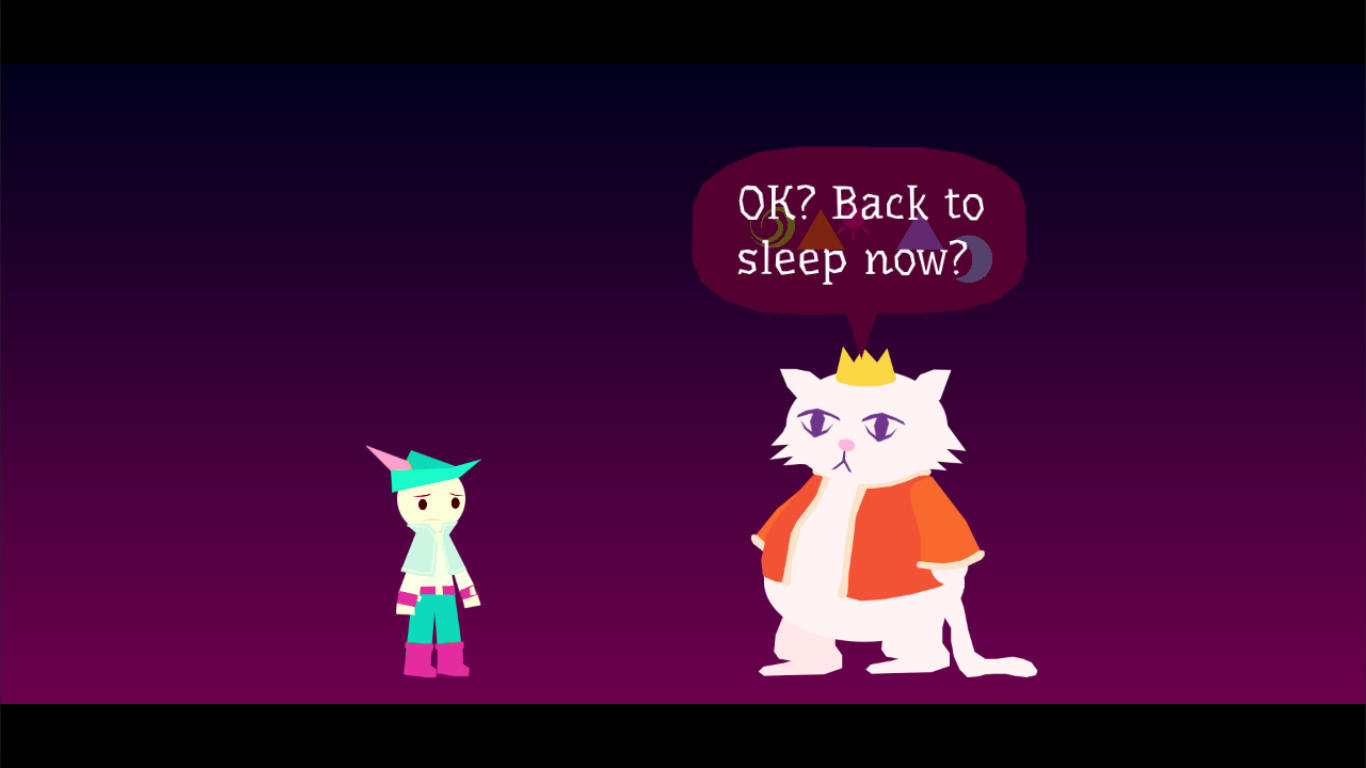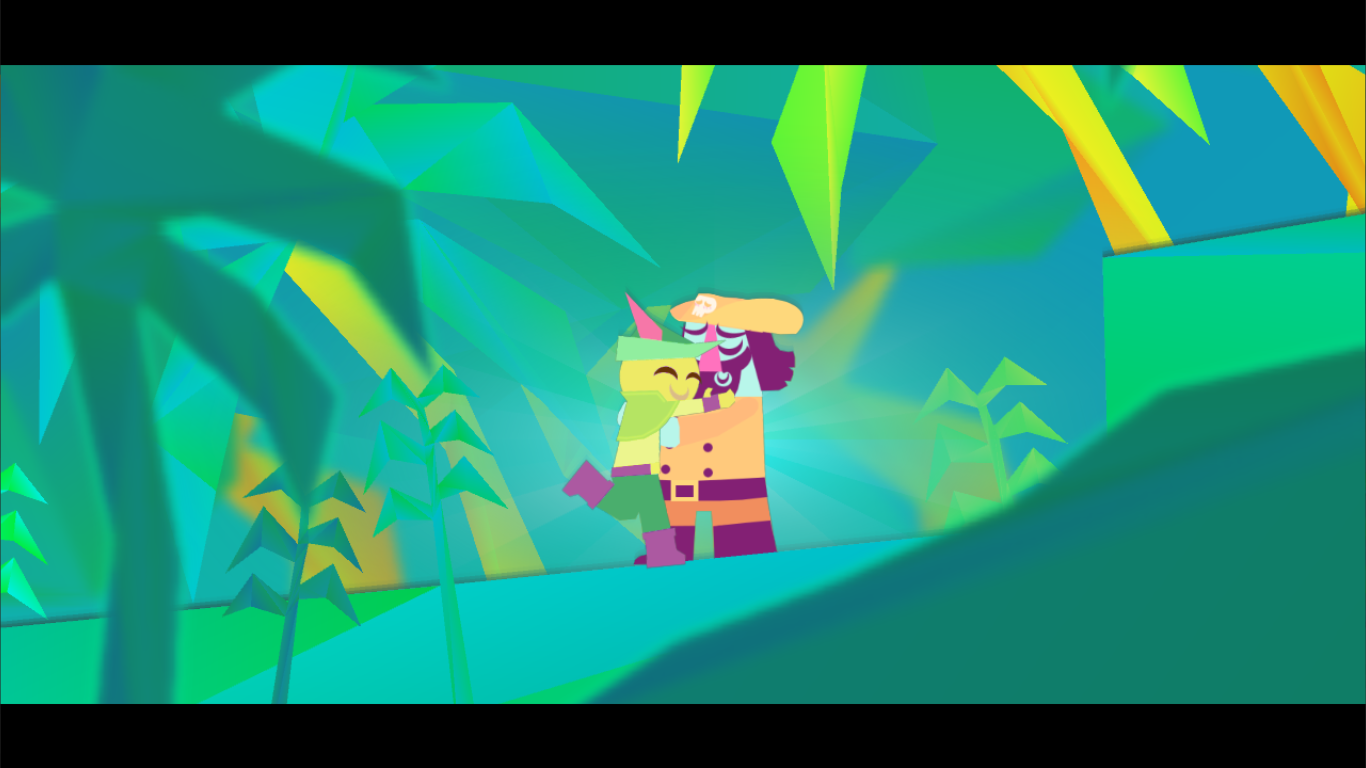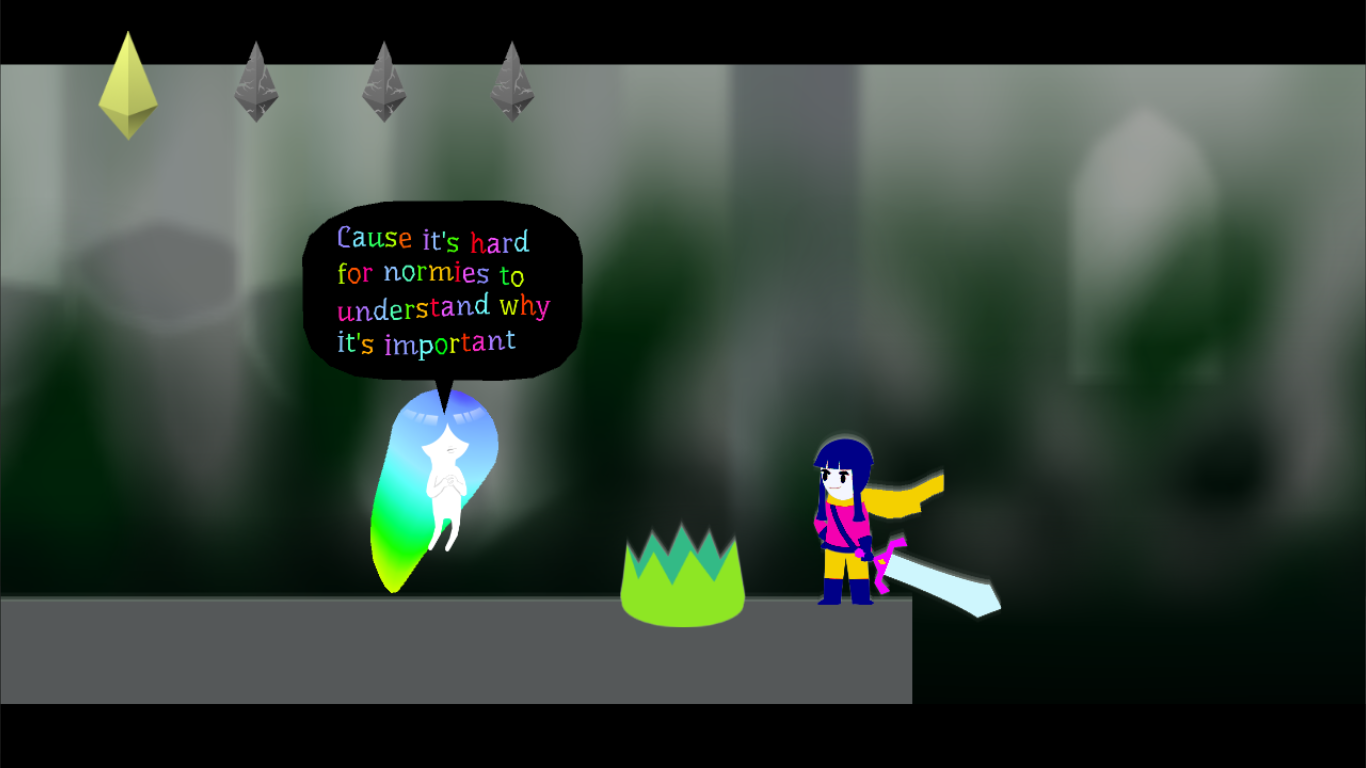First things first, lets get this out of the way, Wandersong is cute. Extremely cute. Not just because of it’s graphics, but it’s plot, dialogue and visuals all come together to create one of the most appealing games of 2018. It’s a shame the gameplay struggles to live up to these high standards.
Taking cues from 2016’s Hue. Wandersong puts you in the shoes of an unnamed bard, charged with saving the world, despite his lack of combat ability and incredibly chipper demeanour.
What’s the Story?
The plot is similar in style to a number of modern Cartoon Network shows (think Adventure Time, Regular Show etc). Instead of swinging around a sword or launching fireballs at enemies, you’re weapon is your voice. Using a colour based circle around the protagonist your goal is to sing at any trouble you come across. These problems aren’t the usual run of the mill video game issues either. You’ll be locating missing mermaids and starting bands, rather than just murdering anyone who gets in your way.

So what exactly is Wandersong all about? As previously mentioned, you control a bard, whose you eventually get to name. You have been charged with saving the world from apocalypse by finding each part of the “earth song”. This little dity can supposedly stop the end of days occurring. The way you go about this is broken up into two distinct gameplay styles.
Spirits and Songs
Firstly you are tasked with finding the gate to a spirit world where one of the Overseers resides. This usually take the form of some like adventure gaming, one chapter has you form a band to learn the song that will unlock the gate. While another has you running around town as a day/night cycle progresses, finding and convincing people to help you sabotage a factory that is spewing out smog that blocks the sun (which it turns out is needed to find the gates to the spirit world).
This is the part of the game that is the most enjoyable. Each scenario is varied and while the puzzling is light, it’s never simple enough to be annoying and solving the problems gives a sense of reward. The breakdown of an epic quest to save the world into these smaller segments is very reminiscent of the DragonQuest series, a comparison no one would be upset to receive.

A Bard’s Tale
Once you’ve made it to the spirit realm the gameplay switches to a more puzzle platformer style. These segments aren’t particularly challenging either, but unlike the light adventuring they don’t often feel as rewarding. The puzzles revolve around well worn tropes. One area sees you fast forwarding and rewinding time to align platforms to make it through, while another has you manipulating wind flow with your songs to cover large gaps. Puzzles like this have been seen for as long as we can remember. While they’re functional, it’s hard to get too excited about them.
The game does throw some mix ups in during the course of the game. These help break out of this gameplay loop to give something a little fresher. In order to avoid spoilers they should just be discovered by the player themselves.
The visuals, sound and story however are where Wandersong truly shines. As mentioned above the graphics are simple, flat 2d layers reminiscent of Night in the Woods. Characters are simple yet charming, with expressive faces and body movements.
This couples well with the soundtrack, which is a mixture of traditional sounding chiptunes alongside some more experimental and themed pieces (the sailing theme is a personal favourite). Everything comes together to create a wonderfully delightful game world.
Pros
Wonderfully designed world
Singing away problems is always fun
Adorable Cartoon Network-Esq story
Cons
Simplistic Puzzles
Mechanics seen in other games
Conclusion
While Wandersong does a lot well, it never really achieves the heights it should. The wonderful story and art direction do a lot to draw the player in. Though the sometimes overly simple gameplay can get tedious towards the end. If the whimsical nature of the world it builds doesn’t pull you in, you’re probably going to find yourself bored quickly.




